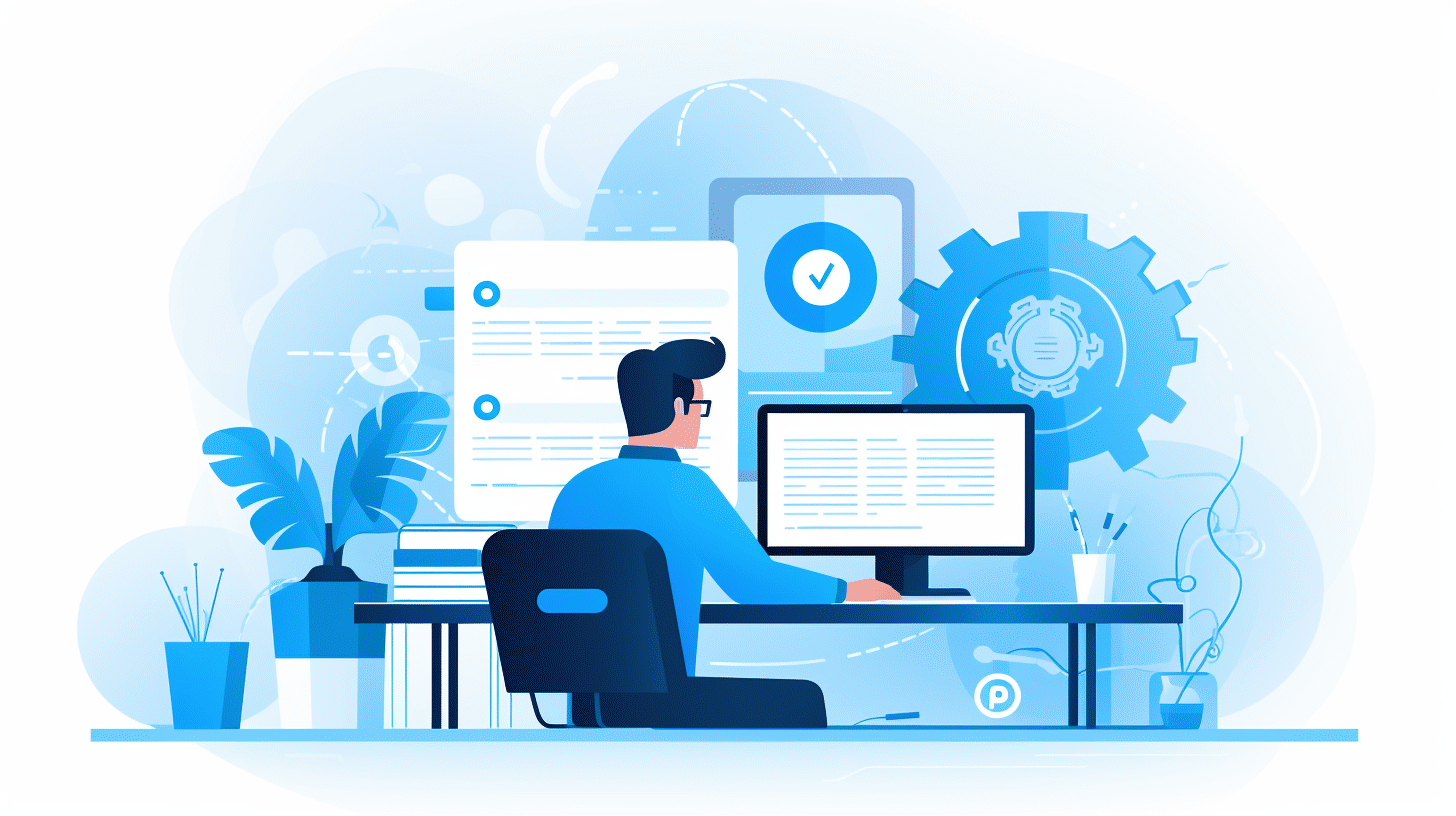在快节奏的 Web 开发世界中,网站速度是决定用户体验成败的关键因素。加载缓慢的网站会让人感到沮丧,并导致用户流失,从而导致高跳出率和低转化率。这就是 WordPress 优化技术发挥作用的地方,它可以帮助 Web 开发人员创建闪电般快速的网站,不仅让用户满意,还能提高搜索引擎排名。
🚀 在本文中,我们将深入探讨速度的艺术,并探索每个 Web 开发人员都应该知道的各种 WordPress 优化技术。从图像和文件优化等基本优化技术到缓存插件和字体优化等更高级的策略,我们将涵盖所有内容。
💡 但在深入探讨 WordPress 优化的细节之前,让我们先看一些有趣的统计数据,这些数据突出了网站速度对用户行为和转化率的影响。了解这些统计数据将帮助您认识到关注网站速度的重要性,并激励您在 WordPress 网站上实施这些优化技术。
📊 所以,系好安全带,准备好为您的 WordPress 网站增强动力,以获得最佳性能!
WordPress 统计和影响
WordPress 不仅仅是一个流行的内容管理系统 (CMS),它还是网站创建和管理领域中一股不容小觑的力量。让我们仔细看看一些令人印象深刻的 WordPress 统计数据及其对网络的重大影响。
- 🌐 为所有网站的 45.8% 提供支持:2023 年,WordPress 将继续主导网络,为全球近一半的网站提供支持[1].
- 💪 CMS 市场占有率 62.5%:在选择 CMS 时,WordPress 占据主导地位,占据超过 60% 的市场份额[2]。难怪许多个人和企业都选择使用 WordPress 来打造自己的在线形象。
- 📝 每秒有 27 个新帖子:WordPress 用户非常忙碌。每过一秒钟,全球使用 WordPress 的网站上就会有 27 篇新帖子诞生[3]。无论是博客文章、新闻文章还是电子商务产品,WordPress 都能轻松处理。
- 🌍 3500 万个实时网站:运行在 WordPress 上的网站数量之多令人震惊。据估计,有 3500 万个实时网站使用 WordPress,显然,全球数百万个人、企业和组织都信任并依赖此 CMS[4].
- 🔌 Yoast SEO插件:搜索引擎优化 (SEO) 在网站可见性和吸引自然流量方面起着至关重要的作用。WordPress 用户已经认识到 Yoast SEO 插件的强大功能,该插件的下载次数已超过 4.63 亿次[5]。通过 Yoast,用户可以优化他们的内容并提高在搜索引擎结果中排名更高的机会。
WordPress 不仅仅是初学者的首选平台。它还是专业人士信赖、开发人员欢迎和内容创建者喜爱的平台。凭借其令人印象深刻的统计数据和广泛的影响力,WordPress 继续成为构建功能强大、灵活且易于定制的网站的首选 CMS。
参考:
WordPress 速度和转换率
在在线业务领域,速度至关重要。用户希望网站能够快速加载,他们不愿意等待。加载时间过长的网站可能会让用户感到沮丧,他们可能会完全放弃该网站。但您是否知道网站速度在转化率中也起着重要作用?
🔍 了解速度和转化之间的联系
研究表明,网站速度与转化率直接相关。事实上,加载时间为 1 秒的网站的转化率是加载时间为 5 秒的网站的三倍。这意味着提高 WordPress 网站的速度可以提高转化率,并最终带来更多销售或潜在客户。
💡 速度如何影响转化?
网站速度可以通过多种方式影响转化率:
- 用户体验: 快速加载的网站可提供积极的用户体验。如果用户可以轻松导航并快速访问内容,他们更有可能保持参与并探索您的网站。
- 页面放弃: 页面加载缓慢会增加用户在网站完全加载之前离开的可能性。每增加一秒的延迟都会导致页面放弃率大幅上升。
- 感知可信度: 速度慢的网站会让用户怀疑您公司的可信度和专业性。另一方面,速度快的网站会给人留下积极的第一印象,并让用户对您的品牌产生信任。
- 移动用户满意度: 随着移动浏览的兴起,优化您的 WordPress 网站以适应移动设备至关重要。页面加载缓慢会导致移动用户体验不佳,从而降低移动用户的转化率。
🚀 优化你的 WordPress 网站以提高速度
为了提高 WordPress 网站的速度并提高转化率,请考虑实施以下措施:
- 使用轻量级主题并删除不必要的插件。
- 通过压缩图像来优化图像,而不会影响质量。
- 启用浏览器缓存来存储静态资产,以加快加载时间。
- 缩小 CSS 和 JavaScript 文件以减小其文件大小。
- 利用内容分发网络 (CDN) 使您的网站在地理位置上更接近您的用户并减少延迟。
通过采取这些步骤,您可以优化 WordPress 网站的速度,增强用户体验,并最终提高转化率。请记住,在快节奏的网络世界中,速度至关重要。
为 WordPress 速度奠定正确的基础
您的 WordPress 网站加载时间太长了吗?网站速度慢会让网站所有者和访问者都感到沮丧。这不仅会影响用户体验,还会影响您的搜索引擎排名。但别担心,您可以采取一些措施来提高 WordPress 网站的速度和性能。
选择好的托管服务
决定 WordPress 网站速度的最重要因素之一是托管服务。选择合适的托管服务提供商可以对网站性能产生巨大影响。以下是选择托管服务时需要考虑的事项:
- 可靠性:寻找提供可靠正常运行时间保证的托管服务。停机时间会严重影响您网站的速度和可访问性。您希望您的网站全天候可供访问者使用。
- 服务器响应时间:服务器响应时间是 Web 服务器响应访问者请求所需的时间。服务器响应时间过慢会导致网站性能低下。寻找具有快速服务器响应时间的托管服务。
- 可扩展性:随着您的网站不断发展壮大并吸引更多访问者,您需要一个能够处理不断增加的流量的托管服务。确保您的托管服务提供商提供可扩展的解决方案,以配合您的网站发展。
- 安全:安全的网站对于保护您的数据和访问者的数据至关重要。选择提供强大安全措施(例如 SSL 证书和定期备份)的托管服务。
- 技术支持:如果您的网站遇到任何问题,可靠的客户支持可以帮您解决。寻找通过实时聊天、电子邮件或电话等各种渠道提供全天候支持的托管服务。
通过选择可靠的托管服务,您可以为最佳网站性能奠定坚实的基础。业内最出色的托管服务提供商之一是 托管 WordPress。他们提供托管 WordPress 托管解决方案,旨在提高速度、安全性和可扩展性。借助托管 WordPress,您可以专注于发展业务,而他们负责处理您网站的技术方面。
请记住,快速加载的网站不仅可以改善用户体验,还可以提高搜索引擎排名。因此,在选择托管服务时要做出正确的选择,并准备好加速您的 WordPress 网站。
基本 WordPress 速度优化技术
在当今快节奏的网络世界中,加载缓慢的网站可能会让访问者大失所望。没有人喜欢等待网站加载,尤其是当只需点击几下鼠标即可获得无数其他选项时。这就是为什么如果您想提供积极的用户体验并让访问者保持参与度,优化 WordPress 网站的速度至关重要。但不要害怕!使用一些简单的技巧,您可以提高网站速度并确保其快速高效地加载。让我们仔细看看一些您可以立即实施的基本 WordPress 速度优化技巧。
图像优化
图片会显著增加网页的整体大小,导致加载缓慢。通过优化图片,您可以在不牺牲质量的情况下减小文件大小,并提高网站的加载速度。以下是一些有效优化图片的技巧:
- 将图片调整为合适的尺寸:在将图片上传到 WordPress 网站之前,请确保将其调整为网页所需的准确尺寸。这将防止浏览器进行不必要的调整,从而节省宝贵的加载时间。
- 压缩图像而不损失质量:利用图像压缩插件或在线工具压缩图像而不损害其质量。这可以减小文件大小而不会影响视觉吸引力。
- 使用响应式图像:实现响应式图像,根据用户的设备调整其大小和分辨率,确保最佳观看体验而不影响速度。
缓存的使用
缓存是一种技术,可以保存网页副本并将其提供给访问者,而不是每次都从头开始生成。这大大减少了服务器的负载并缩短了页面加载时间。以下是您可以如何利用缓存来提高性能:
- 安装缓存插件:利用流行的缓存插件(如 WP Rocket 或 W3 Total Cache)轻松在 WordPress 网站上实现缓存。这些插件提供各种可自定义的选项,以满足您的需求并提高网站速度。
- 启用浏览器缓存:设置浏览器缓存,指示访问者的浏览器存储 CSS、JavaScript 和图像等静态文件,允许他们从本地缓存加载,而不是每次都从服务器请求它们。
最小化重定向
当 URL 发生变化或您想要跟踪点击次数时,重定向有助于引导访问者到正确的页面。但是,过多的重定向会增加不必要的开销并降低网站速度。以下是您可以尽量减少重定向的方法:
- 审核并更新您的链接:定期检查您的网站是否有任何损坏或过时的链接,并纠正它们以避免不必要的重定向。
- 使用服务器端重定向:如果您需要重定向 URL,请选择服务器端重定向(如 301 重定向),因为它们比 JavaScript 或元刷新重定向更快、更高效。
GZIP 压缩
在将文件发送到访问者的浏览器之前对其进行压缩可以大大减少文件在互联网上传输所需的时间。GZIP 压缩是一种流行的网络文件压缩技术,包括 HTML、CSS 和 JavaScript。以下是启用 GZIP 压缩的方法:
- 在您的服务器上启用 GZIP 压缩:联系您的网络托管服务提供商或配置您的服务器以启用 GZIP 压缩。许多托管服务提供商已默认启用 GZIP 压缩。
- 使用插件:如果您更喜欢更用户友好的方法,请安装 WordPress 插件,如 WP Performance Score Booster 或 SG Optimizer,它们提供 GZIP 压缩功能。
文件优化
优化网站文件可以显著缩短加载时间。通过减少文件数量和减小文件大小,您可以提高整体性能。您可以执行以下操作:
- 合并 CSS 和 JavaScript 文件:将多个 CSS 和 JavaScript 文件合并为单个文件,以最大限度地减少对服务器的请求数量。您可以使用 Autoptimize 等插件或手动编辑主题文件来完成此操作。
- 压缩 CSS 和 JavaScript:压缩包括从 CSS 和 JavaScript 文件中删除不必要的字符(如空格、换行符和注释),从而减小文件大小并缩短加载时间。WP Rocket 或 W3 Total Cache 等插件提供内置压缩选项。
请记住,提高网站速度是一个持续的过程。定期监控网站的性能并实施这些优化技术可以确保您的 WordPress 网站性能强劲,并为访问者提供流畅的浏览体验。所以今天就尝试一下,享受更快、更高效的网站带来的好处吧!
有关增强 WordPress 网站性能的更多技巧,请查看 这份综合指南.
高级 WordPress 速度优化技术
在当今快节奏的数字世界中,网站速度至关重要。用户对加载缓慢的页面几乎没有耐心,搜索引擎在对网站进行排名时会考虑加载速度。对于 WordPress 用户来说,优化网站速度对于提供无缝的用户体验和提高 SEO 排名至关重要。
在本文中,我们将探讨一些高级 WordPress 速度优化技术,以帮助您提高网站的性能。通过实施这些技术,您可以确保您的网站快速加载、有效吸引用户并在搜索引擎结果中排名更高。
缓存插件的使用
加速 WordPress 网站的最有效方法之一是使用缓存插件。缓存插件会创建网页的静态版本并将其提供给用户,而不是在每次请求时动态生成每个页面。这可以减少服务器负载并减少加载每个页面所需的时间。
一些流行的 WordPress 缓存插件包括:
- WP火箭
- W3 总缓存
- WP 最快缓存
通过安装和配置缓存插件,您可以显著提高网站的速度和性能。
字体优化
字体对于网站的视觉吸引力至关重要,但也会影响网站的加载速度。使用过多不同的字体或较大的字体文件会降低网站的性能。要优化网站的字体并加快加载时间,请考虑以下提示:
- 尽量减少网站上使用的字体数量。坚持使用一些视觉上令人愉悦的轻量字体来补充网站的设计。
- 使用 Font Squirrel 或 TinyPNG 等工具压缩字体文件。这将减小文件大小,而不会影响字体的视觉质量。
- 使用 font-display: swap CSS 属性在字体完全加载之前优先显示文本内容。
通过优化您网站的字体,您可以确保更快的加载时间和更好的用户体验。
Google Analytics 的本地加载
Google Analytics 可提供有关您网站流量和用户行为的宝贵见解。但是,默认情况下,它会从外部加载其脚本,这可能会影响您网站的加载速度。为了最大限度地减少这种影响,请考虑在您的服务器上本地加载 Google Analytics 脚本。
通过在您自己的服务器上托管 Google Analytics 脚本,您可以减少从外部获取脚本所需的时间。这可以缩短加载时间,并为您的访问者提供更好的用户体验。
主题选择
WordPress 主题的选择会显著影响网站的加载速度。选择主题时,请考虑以下因素:
- 选择专为提高速度而设计的轻量级、优化的主题。
- 寻找使用干净、高效代码的主题,避免不必要的膨胀和过多的插件。
- 考虑提供性能优化功能的主题,例如延迟加载图像、CSS 和 JavaScript 文件的最小化以及针对移动设备的响应式设计。
通过选择优先考虑速度和性能的主题,您可以为快速加载的网站奠定坚实的基础。
定期数据库优化
WordPress 依靠数据库来存储和检索网站内容,随着时间的推移,该数据库可能会变得臃肿并减慢您的网站速度。定期优化 WordPress 数据库有助于提高网站性能。
优化 WordPress 数据库包括清理不必要的数据、删除瞬态数据、优化表格等。您可以使用 WP-Optimize 或 WP-Sweep 等插件来简化此过程并确保数据库平稳运行。
通过定期优化您的 WordPress 数据库,您可以维护精简高效的网站,从而缩短加载时间并提高用户满意度。
总而言之,使用缓存插件、优化字体和本地加载 Google Analytics 可以显著提高 WordPress 网站的速度和性能。此外,选择轻量级主题并定期优化 WordPress 数据库将有助于提高网站速度和效率。立即实施这些先进的速度优化技术,为您的用户提供无缝的浏览体验,同时提高您的 SEO 排名。💨🚀💻
提高整个网站的性能
在当今快节奏的数字环境中,网站性能至关重要。加载时间缓慢会导致用户感到沮丧、跳出率增加,并最终导致收入损失。为了确保访问者获得无缝的网站体验,优化网站性能至关重要。在本节中,我们将探讨有助于提高网站整体速度和性能的四种关键策略:性能指标分析、跟踪网站速度、使用内容分发网络 (CDN) 和清理不必要的数据库数据。
绩效指标分析
分析性能指标是了解网站性能的第一步。通过检查加载时间、页面大小和服务器响应时间等关键指标,您可以确定可能影响网站速度的领域。一些常用的性能分析工具包括:
- Google PageSpeed Insights: 该工具可以深入分析您网站的性能并提出优化建议以提高速度。
- Pingdom 网站速度测试: Pingdom 允许您从世界各地的不同位置测试您网站的速度,并提供有关潜在瓶颈的宝贵见解。
- 网页测试: 该工具提供您网站性能的全面分析,包括详细的瀑布图和改进建议。
通过定期监控这些指标并进行必要的调整,您可以确保您的网站以最佳速度运行。
跟踪网站速度
分析完性能指标后,持续监控网站速度非常重要。通过跟踪网站速度,您可以发现任何性能下降并立即采取行动。跟踪网站速度的一些有效方法包括:
- 谷歌分析(Google Analytics): 这个强大的工具可以提供有关您网站平均页面加载时间的宝贵见解,让您可以跟踪一段时间内的变化并找出需要改进的领域。
- 热图工具: 热图工具(例如 Crazy Egg 或 Hotjar)可以直观地展示用户如何与您的网站互动。通过确定用户花费时间最多的区域,您可以优化这些部分以提高性能。
定期跟踪您的网站速度可以让您及时发现问题并实施优化以增强用户体验。
使用内容分发网络 (CDN)
内容分发网络 (CDN) 是分布在不同地理位置的服务器网络。通过利用 CDN,您可以显著提高网站的性能。其工作原理如下:
- 当用户请求访问您的网站时,CDN 会从最靠近用户位置的服务器提供网站的静态资产(例如图像、CSS 和 JavaScript 文件)。
- 这缩短了用户和服务器之间的距离,从而缩短了加载时间并提高了整体性能。
一些流行的 CDN 包括 Cloudflare、Akamai 和 Amazon CloudFront。实施 CDN 可以显著提高您网站的速度,特别是对于远离您服务器物理位置的用户。
清理不必要的数据库数据
随着时间的推移,网站会在数据库中积累不必要的数据,例如未使用的插件、垃圾评论和帖子修订。这些多余的数据会降低网站速度并增加服务器负载。为了提高性能,定期清理数据库非常重要,具体方法如下:
- 删除未使用的插件和主题。
- 删除垃圾评论。
- 优化数据库表,提高效率。
通过定期清理数据库,您可以减少数据库大小,提高查询性能并增强整体网站速度。
请记住,性能优化是一个持续的过程。通过分析性能指标、跟踪网站速度、实施 CDN 和清理不必要的数据库数据,您可以确保您的网站以最佳速度运行,并为访问者提供无缝的用户体验。
尖端: 分析性能指标、跟踪网站速度、使用 CDN 以及清理数据库中不必要的数据可以提高网站的整体速度和性能。(来源: 无缝网站性能)
结论
总之,优化 WordPress 网站的速度对于改善用户体验、增加转化率和提高搜索引擎排名至关重要。通过实施本文讨论的各种技术,您可以显著提高网站的性能,并为访问者提供更快、更无缝的浏览体验。
请记住,选择可靠的托管服务是为 WordPress 速度奠定正确基础的第一步。从那里,您可以采用基本的优化技术,例如图像优化、缓存和文件优化。对于更高级的优化,请考虑使用缓存插件、优化字体、本地加载 Google Analytics 和选择轻量级主题。此外,定期优化数据库和利用内容分发网络 (CDN) 可以进一步提高整个网站的性能。
通过定期分析性能指标、跟踪网站速度和清理不必要的数据库数据,您可以不断努力提高整个网站的性能并提供卓越的用户体验。
在 Managed-WP,我们了解速度优化对 WordPress 网站的重要性。我们的高级托管 WordPress 云托管平台旨在简化基础设施、提供自由的数字体验,并提供专家全天候问题解决。借助 Managed-WP,您可以将 WordPress 网站的速度和性能提升到新的高度。
立即开始使用 Managed-WP 优化您的 WordPress 网站。 了解更多 了解我们强大的托管平台并释放您网站的全部潜力。
常见问题
- 针对 Web 开发人员的一些 WordPress 优化技巧有哪些?
一些针对 Web 开发人员的 WordPress 优化技术包括:1. 最小化 HTTP 请求,2. 启用缓存,3. 优化图像,4. 压缩文件,5. 清理数据库。
- 为什么网站速度对 SEO 很重要?
网站速度对 SEO 来说很重要,因为 Google 等搜索引擎将页面加载时间视为排名因素。更快的网站可改善用户体验、降低跳出率并增加获得更高搜索引擎排名的机会。
- 使用 CDN(内容分发网络)可以提高网站速度吗?
是的,使用 CDN 可以显著提高网站速度。CDN 在全球多个服务器上存储和分发网站内容,缩短服务器和用户之间的距离。这可以缩短加载时间并提高性能。
- WordPress 有哪些流行的缓存插件?
一些流行的 WordPress 缓存插件包括:1. W3 Total Cache、2. WP Super Cache 和 3. WP Rocket。这些插件可帮助生成网站的静态 HTML 文件并将其提供给访问者,从而提高网站速度。
- 如何优化我的 WordPress 网站上的图片?
您可以使用 Smush、EWWW Image Optimizer 或 ShortPixel 等插件优化 WordPress 网站上的图片。这些插件会自动压缩和优化图片,且不会影响质量,从而减小文件大小并加快页面加载速度。



















